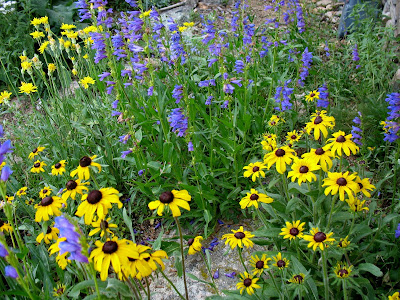By Sharon Faircloth, Jefferson County Master Gardener
There are several blooming plant options during the winter
holidays. A unique option is the Christmas Cactus. The Schlumbergera is actually an
epiphyte native to the coastal mountains of Brazil where they grow on trees and
in the cracks of rocks. The delicate 1-3”
blooms cover the stems in cascading colors from bright white, pale peach to
deep fuchsia to bright red.
The genus is named for Frederic Schlumberger who grew a
variety of the cactus at his home in Rouen, France. While most often referred
to as the Christmas Cactus, a Thanksgiving Cactus (Schlumbergera truncata)
blooms in September and have pointy stems. Christmas Cactus (Schlumbergera Buckleyi)
have a more rounded stems and bloom later in December and January. The Easter Cactus (Schlumbergera gaertneri)
has more of a scalloped leaf stem.
Growing the cactus is usually quite easy, about the only bad
things you can do to them is over water or give them too much sun! For most of the year, watering once a week is
plenty of attention. They like lots of cool indirect light and once they begin
to bloom, only water when dry. Blooms
last about 3-6 weeks and once the plant is finished blooming, you can
fertilize. The nub left after the bloom
drops will grow into another section of the stem.
Unlike the traditional holiday poinsettia, the cactus
doesn’t take hiding in the closet to rebloom.
The cactus will require the cooler temperatures and short days to bloom
but the plant never stops growing and it’s not unusual to live 20 years or more.
To stimulate growth, avoid over watering and make sure your
pot is not too large for the root system.
The plant prefers well-draining soil like a succulent mix in a terra
cotta pot. To add humidity, place
pebbles in a tray under the pot making sure the pot does not sit directly in
water. Think how they live in nature in
rock crags. You can propagate by
snipping the stem at the joint and placing directly in the soil/medium.
There are few issues in growing the cactus. If you have blooms drop before opening, you
are letting the plant get too dry or possibly too much of a temperature
change. If the leaf stems grow red,
there is too much direct sunlight. If
the plant base becomes woody, no worries, it’s normal!
The really lovely thing about the holiday cactus is that
they often bloom more than once a year. Some months after the winter holidays,
you may be surprised by another blush of blooms. For a low maintenance unique plant, try this cactus. It’s readily available in a whole palette of
colors and will reward you throughout the year.
For more information, check out PlantTalk Information Sheets
#1353
and #1336
at planttalk.colostate.edu





